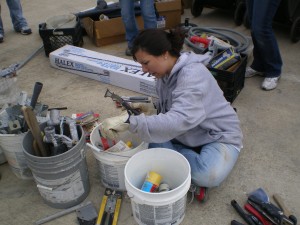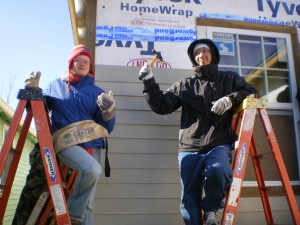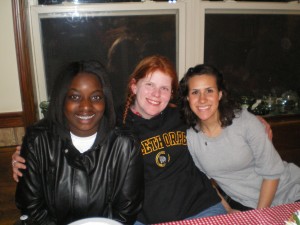In the winter of 2009-2010, instead of sitting in my Florida home, which is 80 degrees in January, eating cookies and sleeping until noon, I decided to go to New Orleans, where I spent several hours for several days building a house in the Louisiana cold. Sounds like a blast, right?
Well, it truly was.
The thing that we, as students, often forget about breaks is that they are supposed to allow us to escape the norm. Are we really on a break when we’re just sitting on a couch eating chips/sleeping/vegging out to our fullest extent? We get a taste of that weekly, even if those moments are short-lived. No, a break is an escape. We want our mind to wander and explore different things. A new place, a new skill, new people, can really facilitate this exploration. This is what Alternative Winter Break and Alternative Spring Break offer: an exciting place with new people and something for your mind to digest.
Not to mention, there was something so satiating about helping create something tangible that you know will benefit another human. This created thing may live longer than me, and will surely host immortal memories for the family that lives there. There was, of course, also an intangible, indescribable thing gained from my week in New Orleans, and though I cannot describe it, it can be felt by anyone who volunteers. Perhaps this feeling arose from meeting so many wonderful people on this trip; I learned first hand why community service is dubbed ‘community’ service. It is not just because of the help to the community at large, but the actual activity of hard work, dedication, and just giving that creates a community among the people present.
I laughed, ate, sweated and sang with people who, by the end of our short week, became friends I could count on even today. And not to forget: the culture of New Orleans was so new to me and so beautiful. I didn’t have to be downtown eating beignets and listening to jazz to get a taste and know I had to come again.
During the alternative break program, students perform short-term projects for local nonprofit agencies and learn about issues such as literacy, poverty, racism, hunger, homelessness and the environment. The program gives students opportunities to learn about the problems faced by members of communities with whom they otherwise may have had little or no direct contact. Being completely immersed into diverse environments enables participants to experience, discuss, and understand social issues in a significant way. The intensity of the experience increases the likelihood that participants will transfer the lessons learned onsite back to their own communities even after the alternative break ends.



